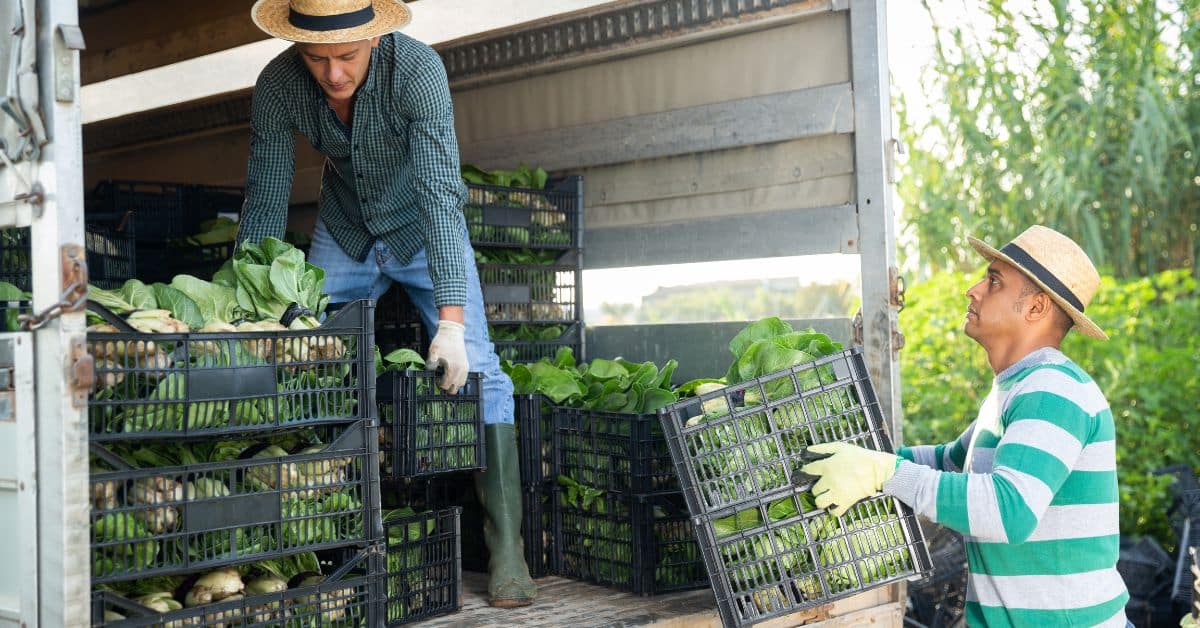

Regenerative agriculture, also called regenerative farming, has its roots in practices that indigenous people used to maintain healthy land and support successful harvests.[1] By contrast, today’s conventional food production methods often deplete soil and pollute waterways while consuming large amounts of natural resources.
Many people see regenerative agriculture as a way to reverse this damage and bring the environment back into balance, but others view these claims with skepticism. Is moving from intensive farming for maximum yield to a regenerative system focused on long-term improvements the solution to today’s climate challenges?
Regenerative Farming Defined
Regeneration International, a nonprofit focused on ending global warming and world hunger through regenerative practices, defines regenerative agriculture as “a holistic land management practice that leverages the power of photosynthesis in plants to close the carbon cycle, and build soil health, crop resilience, and nutrient density.”[2] Farming this way takes all the elements of the ecosystem into account, leveraging their natural interactions to renew the land and reduce emissions.
Regenerative farmers follow five basic principles to accomplish these goals:[3]
- Use no-till methods that don’t disrupt the soil.
- Cover the soil to prevent runoff.
- Keep living roots in the soil as much as possible.
- Focus on crop diversity through companion planting, cover cropping, and succession planting.
- Integrate animals to graze and fertilize the land.
Taken together, these practices build the soil, maintain a healthy soil ecosystem, and reintroduce both carbon and nitrogen into the ground, which are often depleted by growing crops. Soil inputs usually include compost, compost tea, and natural fertilizers from animal and plant sources—instead of chemical fertilizers, herbicides, and pesticides—and farmers seek to minimize the need for irrigation by making use of water already available in the area.

Is Regenerative Agriculture Realistic?
Supporters of regenerative farming see it as a way to protect, conserve, and rehabilitate the planet while producing healthier food. Their claims are starting to get attention from researchers in fields like ecology and environmental science, but some critics aren’t convinced the purported benefits will stand up to scrutiny.
Benefits
Farmers using regenerative practices say they’re able to increase the amount and quality of topsoil on their land, which reduces the need for soil inputs and water.[4] Rich topsoil can also produce bigger yields because more nutrients are available for plants as they grow.
Using as much farm waste as possible to create compost and other natural fertilizers minimizes regenerative farms’ environmental impact and further improves soil health. Healthy soil leads to healthier people and animals and is more resistant to damage from both droughts and floods.
Governments and institutions concerned about climate change point to crop rotation and cover cropping as a way to reduce the effects of greenhouse gas emissions over time. These two practices can help sequester carbon in the soil, leaving less in the atmosphere.
Downsides
The biggest argument against regenerative agriculture focuses on how effective it actually is at combating carbon emissions. Other criticisms include:[5]
- Lack of scientific evidence in favor of supporters’ claims.
- Vague definition of what “regenerative” means.
- Potential for industrial farms or big brands to use regenerative terminology as a form of greenwashing.
- Inability to produce enough food to feed the global population through regenerative farming alone.
- Naturally managing pests and weeds takes longer than using pesticides and herbicides.[6]
Regenerative agriculture is one among many solutions in the quest to improve human and planetary health.
Implementation
Getting a regenerative farm off the ground requires creativity and a willingness to learn. But as more governments and large companies begin to promote the practice, more resources become available to farmers interested in changing their approach to growing food.
To answer the critics’ skepticism surrounding carbon sequestration and food production, there would need to be a widespread commitment among farmers to stick with regenerative agriculture in the long term. Just like conventional agriculture didn’t degrade the environment overnight, rebuilding soil and improving crop yields through regenerative practices will take time.
Financial support, government incentives, and educational initiatives, as well as improved technologies and farming equipment designed to support large-scale regenerative farms, can help bring regenerative agriculture into the mainstream.[7]
Regenerative Farming: The Big Picture
Regenerative agriculture is one among many solutions in the quest to improve human and planetary health. When used alongside initiatives aimed at shortening supply chains and encouraging local food production, regenerative practices can increase access to fresh, nutritious food and contribute to a more secure food system.[8]
Businesses, restaurants, and institutions can also benefit from collaborating with regenerative farms to use fresh, local produce in the products they create and the meals they serve. This gives more people the opportunity to enjoy whole plant foods at school, at work, and when dining out.
While it does take time to transition from conventional farming to regenerative agriculture, the goal isn’t out of reach. Farmers given the right support and education can move away from dependence on industrial practices and embrace methods of growing food that reduce carbon emissions, boost soil, and support healthier communities.
References
- Heim, Tracy. “The Indigenous Origins of Regenerative Agriculture.” National Farmers Union. October 12, 2020. https://nfu.org/2020/10/12/the-indigenous-origins-of-regenerative-agriculture/.
- “What Is Regenerative Agriculture?” Regeneration International. February 24, 2017. https://regenerationinternational.org/2017/02/24/what-is-regenerative-agriculture/.
- Murphy, Jamieson. “The Five Principles of Regenerative Farming and How to Apply Them.” Queensland Country Life. January 3, 2021. https://www.queenslandcountrylife.com.au/story/7048003/the-five-principles-of-regenerative-farming-and-how-to-apply-them/.
- “Regenerative Agriculture.” Wikipedia. May 17, 2021. https://en.wikipedia.org/wiki/Regenerative_agriculture.
- Manning, Lauren. “Opinion: Where the World Resources Institute Got It Wrong about Regenerative Agriculture.” AgFunderNews. July 1, 2020. https://agfundernews.com/opinion-where-the-world-resources-institute-got-it-wrong-about-regenerative-agriculture.html.
- “Can Regenerative Agriculture Replace Conventional Farming?” EIT Food. August 25, 2020. https://www.eitfood.eu/blog/post/can-regenerative-agriculture-replace-conventional-farming.
- Cesano, Daniele. “7 Critical Factors to Scaling Regenerative Agriculture.” AgFunderNews. April 1, 2020. https://agfundernews.com/7-critical-factors-to-scaling-regenerative-agriculture.html.
- Hans, Petra. “5 Ways to Transform Our Food System to Benefit People and Planet.” World Economic Forum. March 5, 2021. https://www.weforum.org/agenda/2021/03/5-ways-transform-food-system-sustainable/.
Copyright 2025 Center for Nutrition Studies. All rights reserved.
Deepen Your Knowledge With Our
Plant-Based Nutrition
Certificate
Plant-Based Nutrition Certificate
- 23,000+ students
- 100% online, learn at your own pace
- No prerequisites
- Continuing education credits








